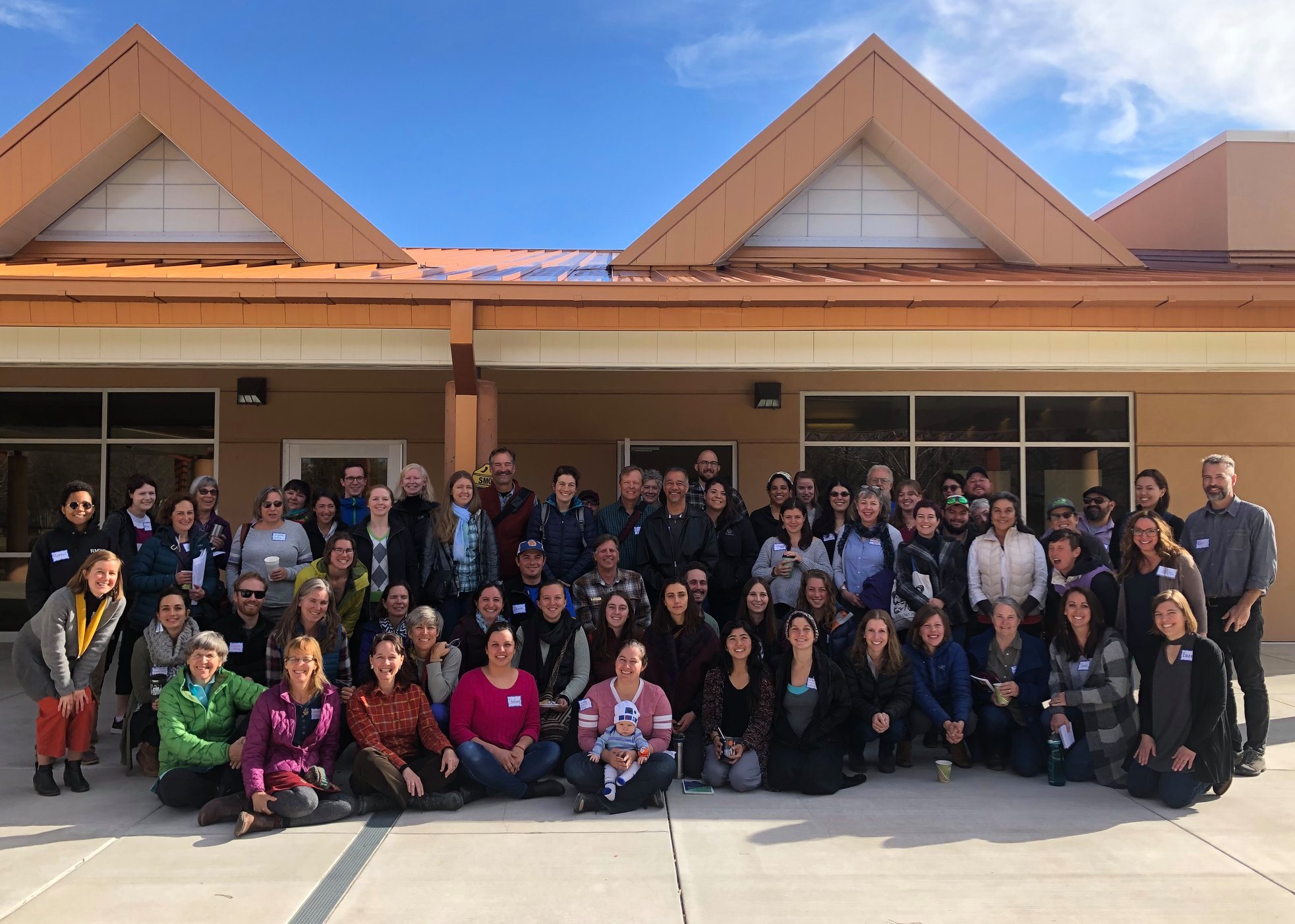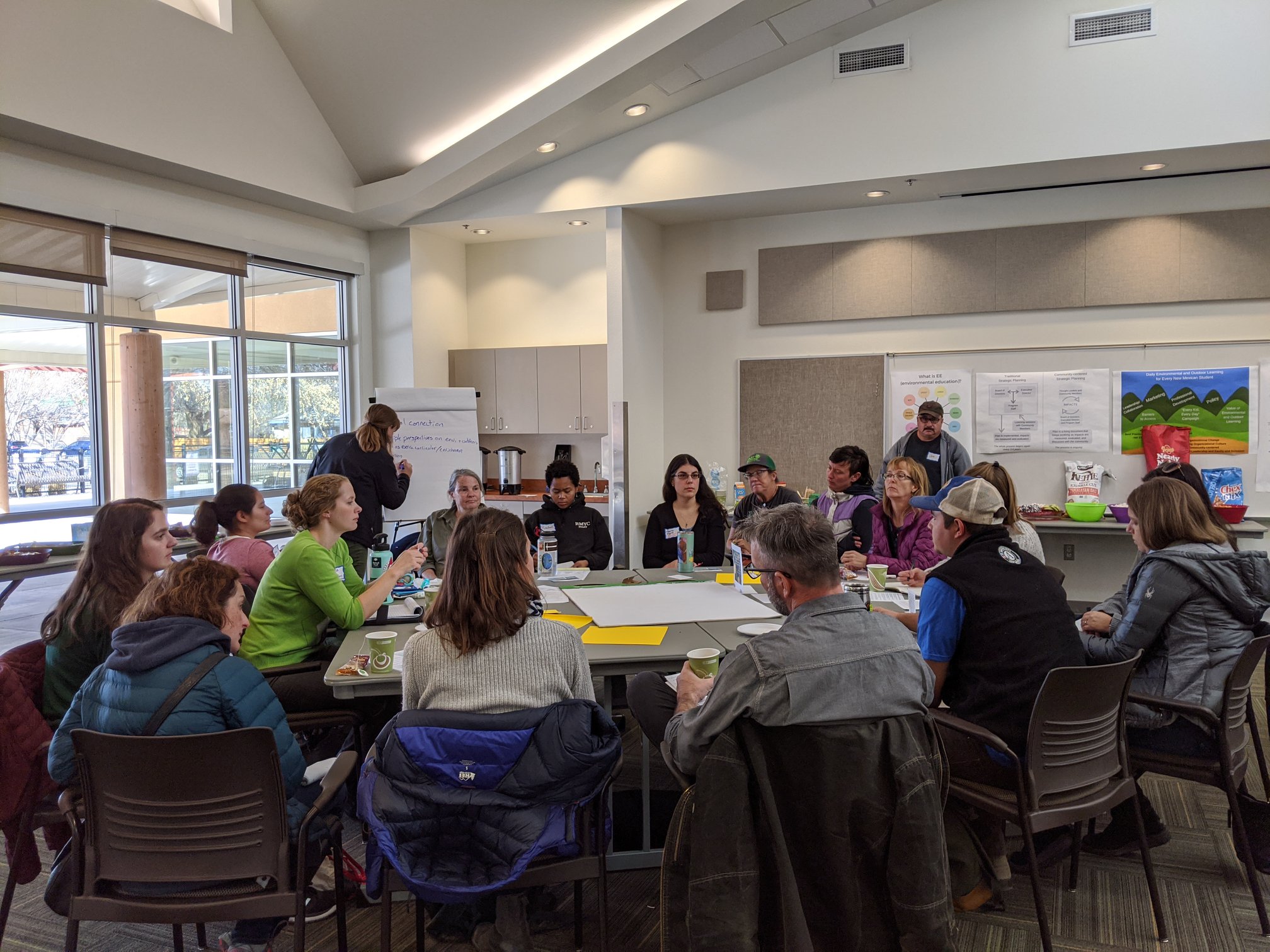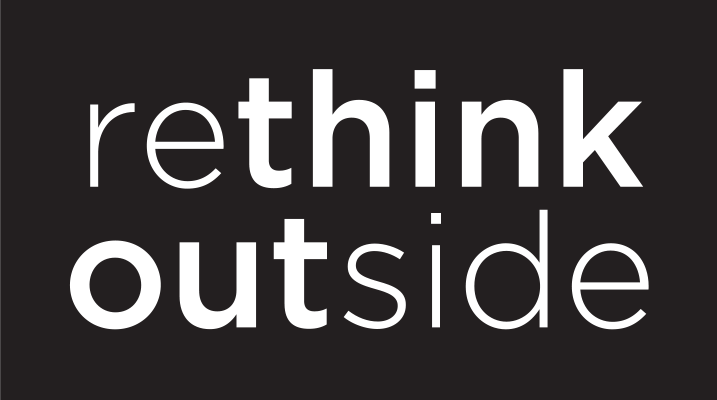Proudly Representing You

Environmental Education of New Mexico (EENM) understands the power of outdoor opportunities to create a thriving future for all.
“Nobody, not counselors, not friends, not even family ever suggested that I could get a career doing what I love,” says Joe Garcia, the Director of the Garden Wisdom Community Scholars Program at La Plazita Institute and a 2020 EENM Fellow.
EENM knows that the stories we tell each other and ourselves matter and that the key to increasing equity and justice lies in fostering connections and relationships. Through a shared vision and strategy for change, the organization exists to cultivate the future of environmental education in New Mexico. To do this, they engage with many perspectives, deepening collective understanding about New Mexico and people’s place in it for every kid, every day and in every way.
Every Kid
“As a kid, I loved the sciences and visiting places where you could learn about the natural world,” says Garcia. “Growing up, that faded into the background.”
Garcia didn’t graduate from high school. Instead, he prioritized getting a job to pay the bills and support himself. By age 26, he had gained work experience in shipping and receiving, factories and warehouses. “Work where you don’t think, you just do,” Garcia says.
But the work didn’t feel right, so he started asking questions like, “Is this all that life is about?” Given his on-the-job experience, though, he didn’t know what else he could do. How could he break out of the mold that was settling around him?
Craving the outdoors, he went to Los Angeles City Hall, where he lived at the time and asked if he could volunteer at the park. “It was a big decision for me, but intuitively I saw a way out,” he says. Although most park volunteers were retired people, they said yes to Garcia, and he began to tag along with the crew.
“They were getting paid $15/hour, I wasn’t getting paid anything,” says Garcia. “My family thought I was crazy to work for free.” He wondered if they were right. His new “co-workers” couldn’t understand why he was there either. Still, he showed up, doing the assigned work. He remembers thinking, “I can’t go back. I have to move forward.”
One day after raking leaves, he took a break, drinking coffee and reading the crew’s paper. He saw an advertisement for a horticulture class, and it hit him. “That’s where I belong,” he thought. That same day, he went to the community college and crashed the course. “I really think I need to be here,” he told the professor. Because a few students didn’t show up, the professor added him to the class. “I paid the tuition and that was my first horticulture class,” says Garcia. At the end of the quarter, he’d earned an A.
“I thought everyone else looked smarter,” he says. “I had to overcome the intimidation of not graduating from high school.”
Despite feeling inadequate, he took more courses. Over time he gained more confidence along with his AA. Then he got a BS at California Polytechnic University in Crop Science. Next, he earned his master’s degree in culture, ecology and sustainable communities from the New College of California. When he finished school, he served in the agriculture commissioner’s office in San Gabriel California, worked for the University of California Cooperative Extension, and supported experiential education in community gardens.
After many years of doing fulfilling work in his chosen field, he moved back home. “I was born in New Mexico and, ancestrally, all sides of my family are from here,” he says. “It’s been good healing to reconnect with that.”
That was fifteen years ago. Since then, he’s become the guide he never had. “I brought all that experience and applied it in the garden program I started,” he says. “Now I give students from middle and high school opportunities to come and learn about jobs and careers in plant sciences.” He also works with teachers-in-training from the University of New Mexico to help spread the word to as many kids as possible.
Every Day
For Allison Martin, Education Program Manager at Valencia Soil & Water Conservation District (SWCD) and EENM Fellow, the outdoors has always been a safe place to learn. “I grew up in Albuquerque, playing outside all the time,” she says. “It’s where I wanted to be, where I felt comfortable and free.”
This love of learning led Martin to a degree in teaching, but it felt wrong when she found herself in a classroom. So she started working for the National Park Service. There she created education programs designed to connect to different ages, genders and cultures. This experience eventually led her to get her master’s degree. “I wanted to show outdoor learning as a centered approach to teaching, without a hierarchy between in and out, that it’s place-based, student-centered and cross-cuts all subjects,” she says.

Today, at SWCD, she works with the Belen and Los Lunas School Districts to offer a wide variety of environmental education programs for all grade levels. “The kids I work with are all in Title 1 schools. Many live below the poverty line, receive free-and-reduced lunch, live with one parent, and don’t have the opportunity to go outside a lot,” she says. “But when we go outside, they are all eager to learn.” She teaches in an outdoor classroom in the same county as the schools, so her students already have some familiarity with the plants and animals and quickly begin to think critically about what they see.
“Their desire to connect is so strong. If we can nurture that, it will flourish,” says Martin.
Her biggest goal is to make environmental education an everyday part of kids’ experience. “When we see a sandhill crane, we ask why do we see those now? Going outside helps to show that circle. If you take something away, it impacts everything,” she says. “I asked my students today to create a river and riparian habitat, showing how everything is connected,” Martin says. “One student showed me a mandala. He had the river at the center.”
Martin also creates teacher workshops and recognizes the vital role of caregivers. “We need parents and teachers to be involved or the learning stops right as they leave,” she says. “Kids desires only go so far.”
As a parent herself, she brings these same lessons home. In addition to play and observation, there are also lessons on work and survival. “When I go outside to feed chickens, or to get firewood, I involve my children,” she says. “They have a lot of questions about what’s happening.”
Every Way
Tallie Segel, EENM board member, doesn’t remember when she wasn’t connecting in the outdoors, starting at a very early age with an enthusiastic caregiver at her daycare. “We’d be out on a nature walk and she’d be full-body pointing,” says Segel. “There’s a robin!”
As Segel grew up, she spent time outside around her home in Albuquerque, riding horses and bikes and playing in the ditch when it was free of water. Her parents, both with master’s degrees, imparted their love for education both indoors and through their hobbies outdoors. As a family, they went fly fishing and camping.
In high school, she signed up for a conservation crew project, traveling with other teens to Lake Superior. “We built boardwalks and retaining walls,” Segel says. “It was a formative moment, fun and a lot of hard work. We also learned about careers outside and met park rangers and people who worked in conservation in different capacities.”
In college, Segel majored in ecology because she loved science and field trips. Her double major in French offered a study-abroad in Madagascar–a place she had dreamed about since childhood. There, she learned even more.
“Studying in a place where people are more connected-to and reliant-on minimally processed resources gave me a different perspective of what conservation meant,” she says. “Understanding and being told by my host family, ‘we’re very rich people, we’ve just been exploited over and over,’ was humbling.”
The trip also offered another perspective related to her Black identity. “It was awkward,” she says. “I spoke in French, the language of the colonizer, and people wondered why someone who looked like me wasn’t speaking Malagasy.” Those social and ecological experiences changed how Segel looked at herself and the larger world.
Today, after many years of teaching environmental education and continually being asked, “Why is the field is so white?” Segel is earning a doctorate focused on answering that question. “I know why I’m in the field of environmental education,” she says, “but I didn’t know why others weren’t.”
As her studies progress, she’s learning that the answer may have less to do with access and money and more to do with the stories we tell ourselves. “It’s about culture and traditions, what or who we are erasing or criminalizing, what we say nature is, and our foundations as teachers,” she says.
Filled With Potential
Every Kid, Every Day, Every Way speaks to the incredible potential in play in New Mexico. As a new narrative and rallying cry, it offers a response to the metrics that show New Mexico as 49th or 50th in the rankings for almost every indicator of child and family wellbeing.
“Let’s talk about what we can do instead of what we can’t,” says Eileen Everett, EENM’s executive director. “It’s that abundance mindset. We can accomplish a few things or we can think bigger. The world is calling for us to think bigger and work together more.”
Part of that story of working together and thinking bigger is EENM’s Fellowship Program, started in 2020 and rooted in transformational leadership. Joe Garcia and Allison Martin represent just a couple of the many voices in the first cohort.
“The more you learn about leadership and social justice, the more you realize how much you don’t know,” says Everett. “If you think you have all the answers, then you aren’t being true to the process. Educators, kids, parents and community members, representatives of special interests, recreation, conservation, environmental justice, policy makers, nonprofits, funders and more need to show up as leaders in different ways.”
“It’s time that we stopped trying to function all by ourselves, because we can’t. We realize we aren’t getting anywhere,” says Martin.
“We need to be putting our energy into what we want to experience instead of what we’re not happy about,” says Garcia. “With my own situation as a volunteer at the park, I could have said, ‘why am I doing this?’ and given up. Then I wouldn’t be here now. It all adds up.”
“Meaningful experiences and deeper connections to community and land help us address other issues like public health, pollution, protection of species, protection of watersheds, and systems of injustice,” says Segel.
“So many kids don’t know what’s out there,” says Garcia. “They just drop out and get a job. They don’t get a taste of the lab, the outdoor experience, the history when they visit someplace. A drop of water in a microscope opens up a whole new world. I had to get to college to experience that. It’s simple but it can change someone’s universe.”
What stories do you tell yourself about who you are as an individual and what you can do as part of a community? What are your expectations about the outdoors and what we can learn there? What do you believe makes for a good education that effectively prepares us to engage with our local home and the larger world?
